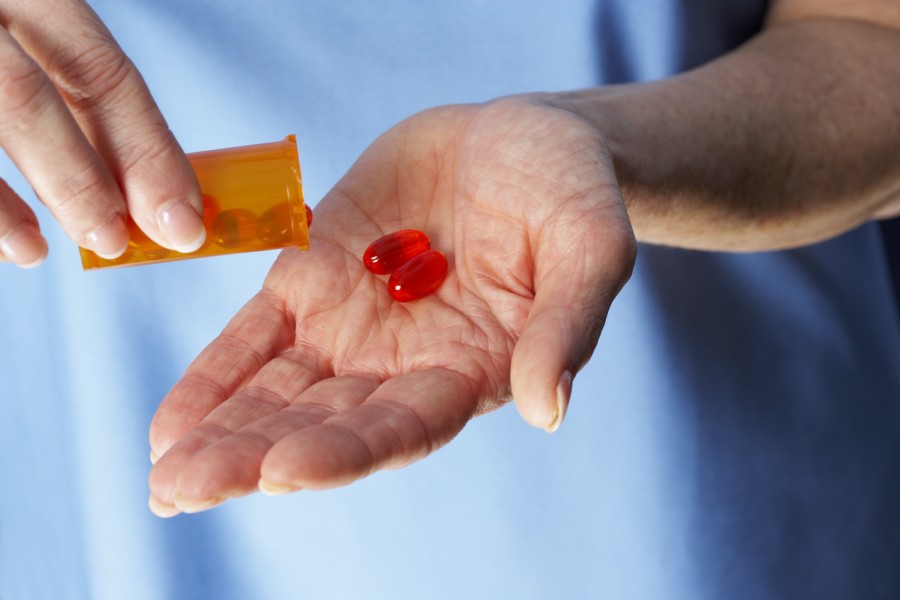Do Vitamins or Minerals (Apart From Lithium) Have Mood-Stabilizing Effects
Nutritional scientists have been well funded by agribusiness to find ways to deal with factors that interfere with animal health, including aggressive and destructive behavior. When farm animals become “violent”-when pigs start biting each others’ ears and tails, when chickens attack chickens-farmers have learned that the aggressive behavior can be reduced by adding certain minerals and vitamins to their diet, without the need for veterinary intervention.
In 1996, animal nutrition specialist David L. Hardy described this approach to Anthony F. Stephan, whose children had severe treatment-resistant bipolar disorder. Stephan then added similar nutrients to his children’s diet. On the nutritional supplements, both children stabilized clinically and have not needed psychiatric medication for the last 5 years. Hardy and Stephan began advising family members and friends about this nutrient supplement and have now worked with over 2500 psychiatric patients (D. L. Hardy, personal communication, 2001). They also began to collaborate with Bonnie J. Kaplan, Ph.D., a research psychologist at the University of Calgary in Alberta, Canada.
In this issue, Kaplan and colleagues (1) describe an open trial of the first 14 adults with bipolar disorder treated with this nutritional supplement, which consists of a broad range of minerals and vitamins, plus 3 amino acids and several antioxidants. Symptom reductions were clinically noted within 2 weeks and sustained over 6 months of observation. All outcome measures showed significant improvements (55% to 66% symptom reduction), and a strong effect size (> .80) was observed for ratings of depression as well as mania. Most patients could reduce their doses of psychiatric medications, and some patients became stable without any psychiatric medication. Only 2 patients started on new medications that might conceivably have contributed to their stabilization. Even allowing for the usual overestimation of effects in open-label series, these preliminary findings raise interesting questions about nutrition-behavior interactions.
In view of the 50 years of experience with lithium, the notion that minerals can treat bipolar disorder is unsurprising. However, the nutrient supplement studied by Kaplan and colleagues contains no lithium. Might other dietary nutrients have mood-stabilizer properties?
Some may object that a clinical trial of a mixture of ingredients is inherently unscientific: How can one know which ingredient is the active one, whether a smaller number of ingredients will have the same clinical effect, or whether the same ingredients are active in different patients? These questions will become worth pursuing once it has been formally determined whether the mixture, handed down from animal husbandry as a single entity, works in humans. Kaplan’s open-label report justifies her now ongoing controlled study, whose outcome appropriately precedes pursuing questions of mechanism of action (2) and parsimony.
Even so, it is difficult to avoid speculating about possible mechanisms. Might minerals serve as catalysts for enzymes involved in neurotransmitter metabolism, change drug biotransformation, modify membrane receptors or channels, influence second or third messenger systems, or alter gene expression? Lithium, a single cation, has spawned a minor industry of investigations into mechanisms of action, and the possibilities if there were numerous interacting micronutrients (the collective term for minerals and vitamins) are staggering.


My interest in this nutrient mixture was initially sparked by a case in my clinical practice. A 10-year-old with bipolar disorder was referred for treatment of severe temper tantrums, which had lasted for 2 to 4 hours daily for 4 months. The well-nourished child had no prior psychiatric history or treatment. After 2 days on the Hardy-Stephan nutrient regimen, his tantrums showed significant improvement, with the father-psychiatrist reporting a “complete” absence of outbursts or even irritability at 5 days. After 2 weeks, the available supply of the nutrient supplement was exhausted, and tantrums returned within 48 hours. A similar supplement, containing most of the same ingredients, was then started and produced a moderate improvement, which parents and teachers estimated as 60% of the original effect. When restarted on the original formula, the symptoms were judged to have again responded completely. This naturalistic A-B-A-C-B trial caught my attention because of the full stabilization without psychiatric medications and the absence of observed adverse effects.
I proceeded to cautiously conduct additional trials of the Hardy-Stephan nutrient supplement. Among 22 patients (10 adults, 9 adolescents, 3 preadolescents) who clinically met criteria for bipolar disorder, 19 showed what I judged to be a positive response (2 mild, 7 moderate, 10 marked improvement). Among the 15 patients who were being treated with medications when they began the nutritional supplement, 11 patients have been stable for 6 to 9 months without psychiatric medications. These observations are consistent with Kaplan’s open-label findings, but leave questions of safety unresolved.
Nausea was the main adverse effect in Kaplan’s study. In the larger anecdotal experience of Hardy and Stephan and my limited clinical observations, loose stools and headache were common. Diarrhea, vomiting, flatulence, and agitation were less common. Classical symptoms of mineral or vitamin toxicity were not encountered, but might have emerged with lengthier treatment or more systematic observation.
The Hardy-Stephan supplement contains many nutrients at high doses relative to the Recommended Daily Allowance (RDA), but these RDA levels were primarily established to prevent deficiency disorders in the general population. A broader range of vitamin and mineral functions (3,4) are considered in formulating the newer daily intake standards, which vary widely because of different criteria for adequacy and different health goals. (5) Although most ingredients in the nutrient supplement studied by Kaplan and colleagues appear well within safe limits, any multi – ingredient treatment might have toxic effects that cannot be readily predicted from its individual components. Even though it contains only “natural” ingredients and is not under U.S. Food and Drug Administration (FDA) purview, the Hardy-Stephan nutrient supplement should be examined in controlled empirical research – just as new pharmacologic agents are – to properly assess adverse effects and potential risks.
Psychiatrists do not normally think of vitamins or minerals as modifiers of the effects of psychiatric medications, but the early anecdotal experience with this nutrient supplement suggests that there may be strong micronutrient-medication interactions. This mineral-vitamin supplement seems to generally potentiate the clinical properties of psychiatric drugs. Most patients in the Kaplan et al. study could be managed with less medication after the nutrient supplement was added. To avoid medication toxicity, Hardy and Stephan have suggested to patients’ psychiatrists that the doses of psychiatric medications be rapidly reduced shortly after the nutrient supplement is initiated. In my observations, transitioning patients from medications to micronutrients is exceedingly tricky to manage. Introducing micronutrients too quickly can increase the adverse effects of medications, including agitation, while withdrawing psychiatric medications too quickly can result in symptom exacerbation. Often, both increased adverse effects and symptom resurgence are seen at once. Much more data are needed about how to “transition” patients who are currently taking psychiatric medications. Although it appears less difficult to treat medication-naive patients (such as my 10-year-old patient), the transition from psychiatric medications to micronutrients can require genuine technical savvy-even for patients who have not taken such medications for several weeks or months. Clinicians who mistakenly approach these new findings as encouragement to combine micronutrients with psychiatric medications may find that they have stepped into a serious quagmire.
Although health food advocates have made numerous claims without scientific documentation, nutritional influences on mental illness have received considerable research attention, (6) some of which is quite rigorous and promising. Andrew Stoll’s research on omega-3 fatty acids for bipolar disorder (7,8) and Eugene Arnold’s work on omega-6 fatty acids for attention deficit disorder (9-11) suggest that these nutrients might themselves be therapeutic. Other micronutrients (calcium, chromium) and macronutrients (inositol, amino acids) have also shown some potential for influencing mood disorders. (12-15) Arnold’s recent findings suggest that relative zinc deficiency might explain why some patients with ADHD do not show a more robust response to psychostimulants. (9)
Several large-scale double-blind placebo-controlled studies of RDA or high-dose multivitamin regimens in adults have reported improved scores of mood and cognition (16,17) as well as anxiety and somatic symptoms. (18) A recent review reported that 10 of 12 randomized double-blind placebo- controlled studies found that multi-micronutrient regimens can improve cognitive functioning in children. (19) However, high-dose multivitamin treatments have not been found to be effective in children with ADHD or learning disorders. (11,20)
Speculatively, there is a great deal to learn about minerals and vitamins in psychiatric pathophysiology and psychopharmacology. It is intriguing that many of the enzymes proposed as target sites of lithium action are metalloenzymes that are noncompetitively inhibited by lithium, which probably acts by displacing the divalent cation. (21) Why would supplementation with divalent cations have a therapeutic effect? Do we know enough about complex intracellular regulatory interactions to answer this question? Individual micronutrients will need to be examined in combination with lithium, but it is unlikely that the physiology will be so simplistic and dyadic. The groundbreaking approach of examining several nutrient ingredients at once, while a violation of our usual tenets of investigation, may present an opportunity to examine how micronutrients might operate in concert.
Assessing the safety and efficacy of multinutrient formulas will require considerable research. Developing dose-effect curves for each micronutrient, and examining all possible combinations of micronutrients, will be a horrifically large task. (22) Many years will be required to arrive at a formula that is optimal for the general population, but it is more likely there will eventually be different formulas whose safety and efficacy are optimized to the metabolic requirements of treating different disorders, different individuals, different ages, and different comorbid health situations.
The possibility of a nutritional alternative to drug treatment may raise hope and carry the risk of igniting public interest beyond reasonable bounds. Some patients may find it difficult to wait for nutrient supplements to be examined in humans for both efficacy and safety in controlled trials, and clinicians will need to help patients keep their enthusiasm from pushing usage beyond its scientific basis. Similarly, clinicians will want to think twice if they are tempted to forge ahead with empirical trials of this novel treatment with possible unknown risks and unproven benefit. Some physicians, presuming a low risk of toxicity, may reason that it is judicious to allow some drug-naive patients to proceed with empirical trials of nutrient supplements for a few weeks before committing them to treatment with psychiatric medications. Most clinicians will want the reassurance of systematic safety data before beginning to examine its effects in patients. Clinicians will hopefully minimize risks of nutrient-medication interactions by initially restricting their trials to patients who have not recently used psychiatric medications.
If Kaplan and colleagues’ preliminary findings are confirmed in controlled research, and if safety studies are favorable, what then? What if some psychiatric patients could be treated with inexpensive vitamins and minerals rather than expensive patented pharmaceuticals? or what if some doses of psychiatric drugs could be reduced by the concurrent use of nutrients? The economic implications, for individual patients and for the pharmaceutical industry, are difficult to overlook. For now, micronutrient treatments and other nutritional approaches remain in a very early stage of scientific investigation. Depending on how this line of research develops, clinicians and researchers may need to rethink the traditional bias against nutritional supplementation as a potential treatment for major psychiatric disorders.
Charles W. Popper, M.D.
The Journal of Clinical Psychiatry
Dec 2001
REFERENCES
1. Kaplan BJ, Simpson JSA, Ferre RC, et al. Effective mood stabilization with a chelated mineral supplement: an open-label trial in bipolar disorder. J Clin Psychiatry 2001;62:936-944
2. Shaldubina A, Agam G, Belmaker RH. The mechanism of lithium action: state of the art, ten years later. Prog Neuropsychopharmacol Biol Psychiatry 2001;25:855-866
3. Mertz W. A perspective on mineral standards. J Nutr 1998:128(suppl 2): 375S-378S
4. Cashman KD, Flynn A. Optimal nutrition: calcium, magnesium and phosphorus. Proc Nutr Soc 1999;58:477-487
5. Mertz W. Three decades of dietary recommendations. Nutr Rev 2000;58: 324-331
6. Werbach MR. Nutritional Influences on Mental Illness: A Sourcebook of Clinical Research. 2nd ed. Tarzana, Calif: Third Line Press; 1999
7. Stoll AL, Locke CA, Marangell LB, et al, Omega-3 fatty acids and bipolar disorder: a review. Prostaglandins Leukot Essent Fatty Acids 1999;60: 329-337
8. Stoll AL, Severus E, Freeman MP, et al. Omega 3 fatty acids in bipolar disorder: a preliminary double-blind, placebo-controlled trial. Arch Gen Psychiatry 1999;56:407-412
9. Arnold LE, Pinkham SM, Votolato N. Does zinc moderate essential fatty acid and amphetamine treatment of attention-deficit/hyperactivity disorder? J Child Adolesc Psychopharmacol 2000;10:111-117
10. Arnold LE. Alternative treatments for adults with attention-deficit hyperactivity disorder (ADHD). In: Wasserstein J, Wolfe LE, Lefever FF, eds. Adult Attention Deficit Disorders: Brain Mechanisms and Life Outcomes. New York, NY. New York Academy of Sciences; 2001:310-341
11. Arnold LE. Treatment alternatives for attention-deficit/hyperactivity disorder. In: Jensen PS, Cooper J, eds. Diagnosis and Treatment of ADHD: An Evidence-Based Approach. Washington, DC: American Psychiatric Press. In press
12. Levy NA, Janicak PG. Calcium channel antagonists for the treatment of bipolar disorder. Bipolar Disord 2000;2:108-119
13. McLeod MN, Golden RN. Chromium treatment of depression. Int J Neuropsychopharmacol 2000;3:311-314
14. Chengappa KN, Levine J, Gershon S, et al. Inositol as an add-on treatment for bipolar depression. Bipolar Disord 2000;2:47-55
15. Van der Does AJ. The effects of tryptophan depletion on mood and psychiatric symptoms. J Affect Disord 2001;64:107-119
16. Benton D, Fordy J, Haller J. The impact of long-term vitamin supplementation on cognitive functioning. Psychopharmacology (Berl) 1995; 117: 298-305
17. Benton D, Haller J, Fordy J. Vitamin supplementation for 1 year improves mood. Neuropsychobiology 1995;32:98-105
18. Carroll D, Ring C, Suter M, et al. The effects of an oral multivitamin combination with calcium, magnesium, and zinc on psychological well-being in healthy young male volunteers: a double-blind placebo-controlled trial. Psychopharmacology (Berl) 2000; 150:220-225
19. Benton D. Micro-nutrient supplementation and the intelligence of children. Neurosci Biobehav Rev 2001;125:297-309
20. Arnold LE. Treatment alternatives for attention-deficit hyperactivity disorder (ADHD). J Arm Disord 1999;3:30-48
21. Phiel CJ, Klein PS. Molecular targets of lithium action. Annu Rev Pharmacol Toxicol 2001;41:789-813
22. Pryor WA. Vitamin E and heart disease: basic science to clinical intervention trials. Free Radic Biol Med 2000;28:141-164





